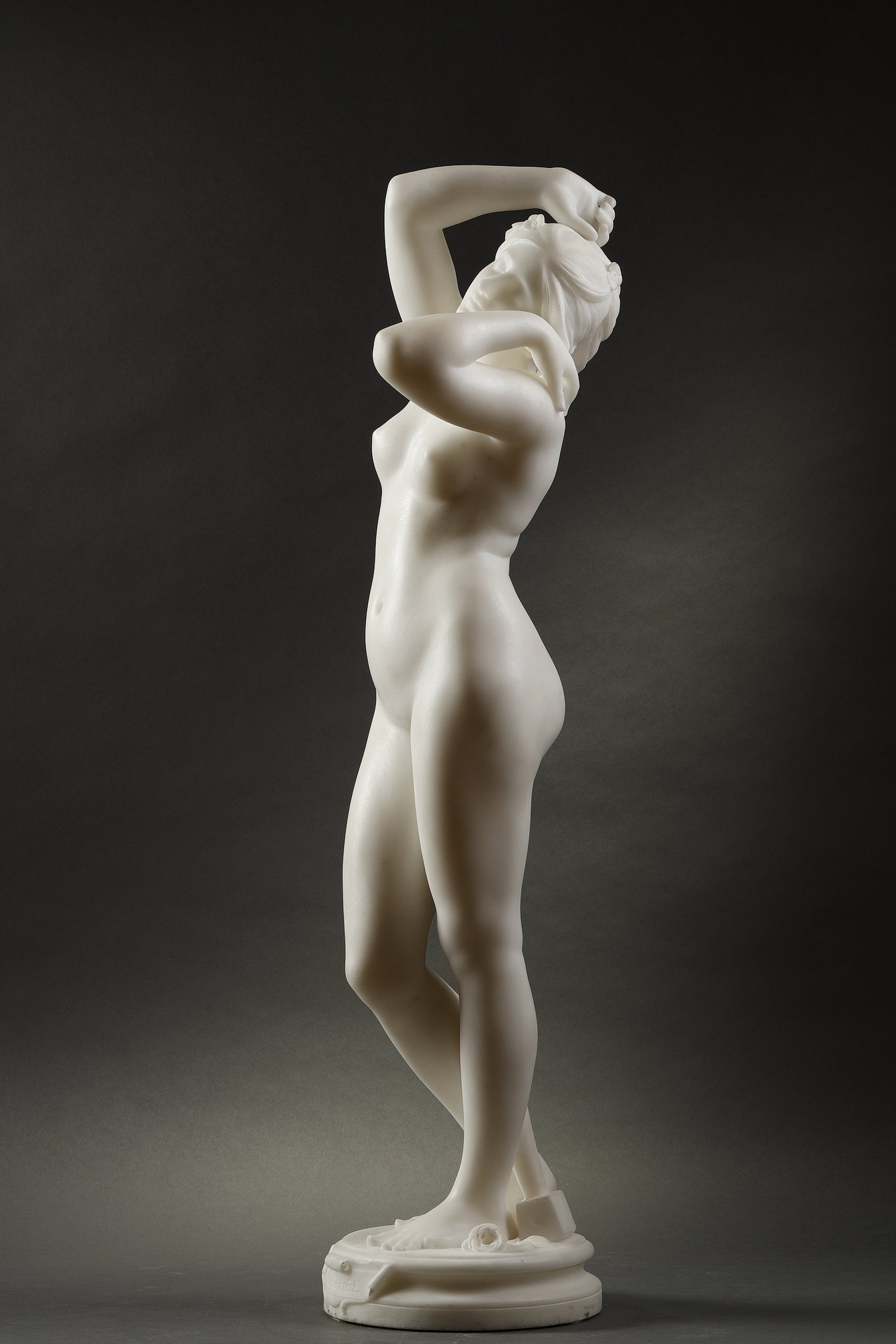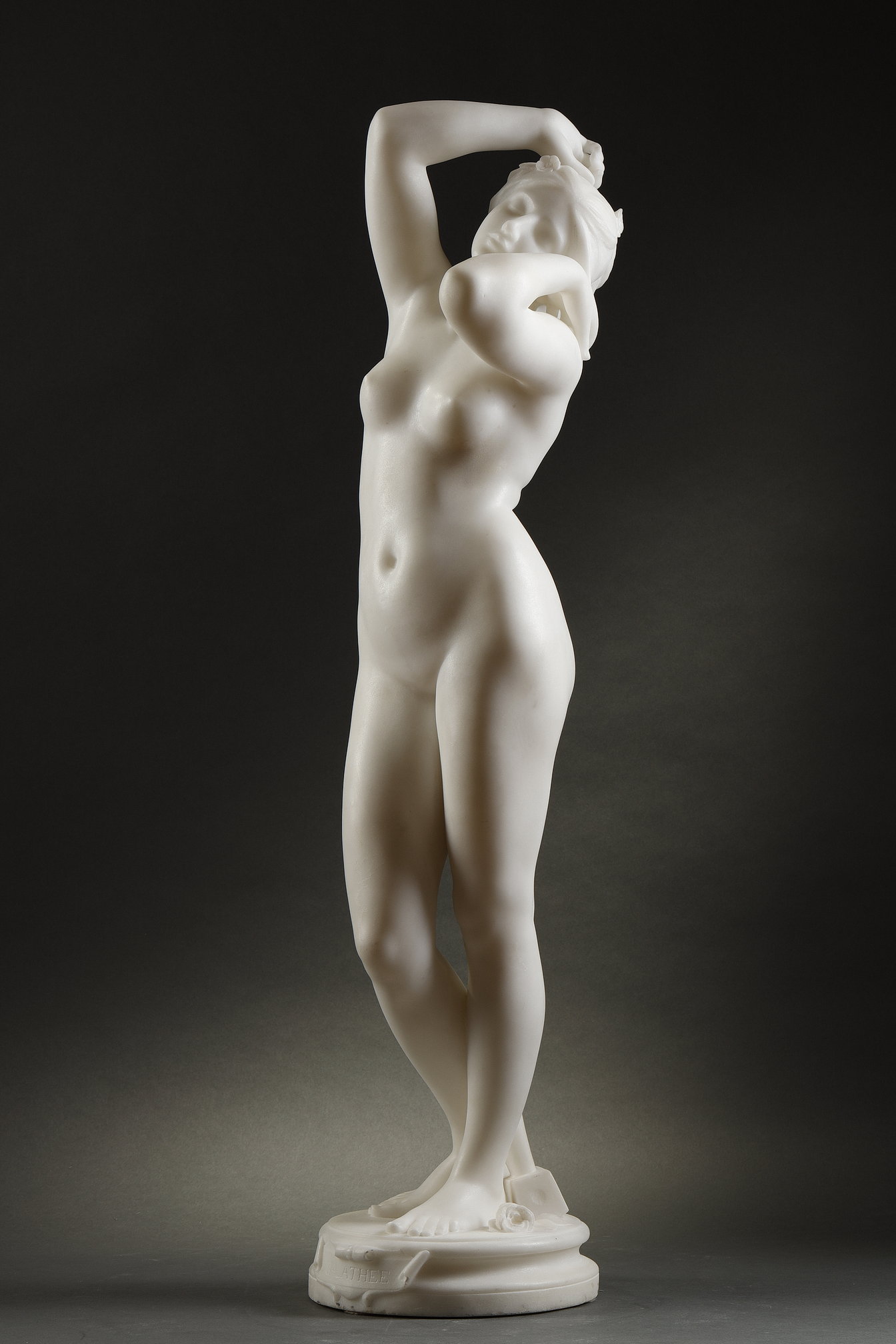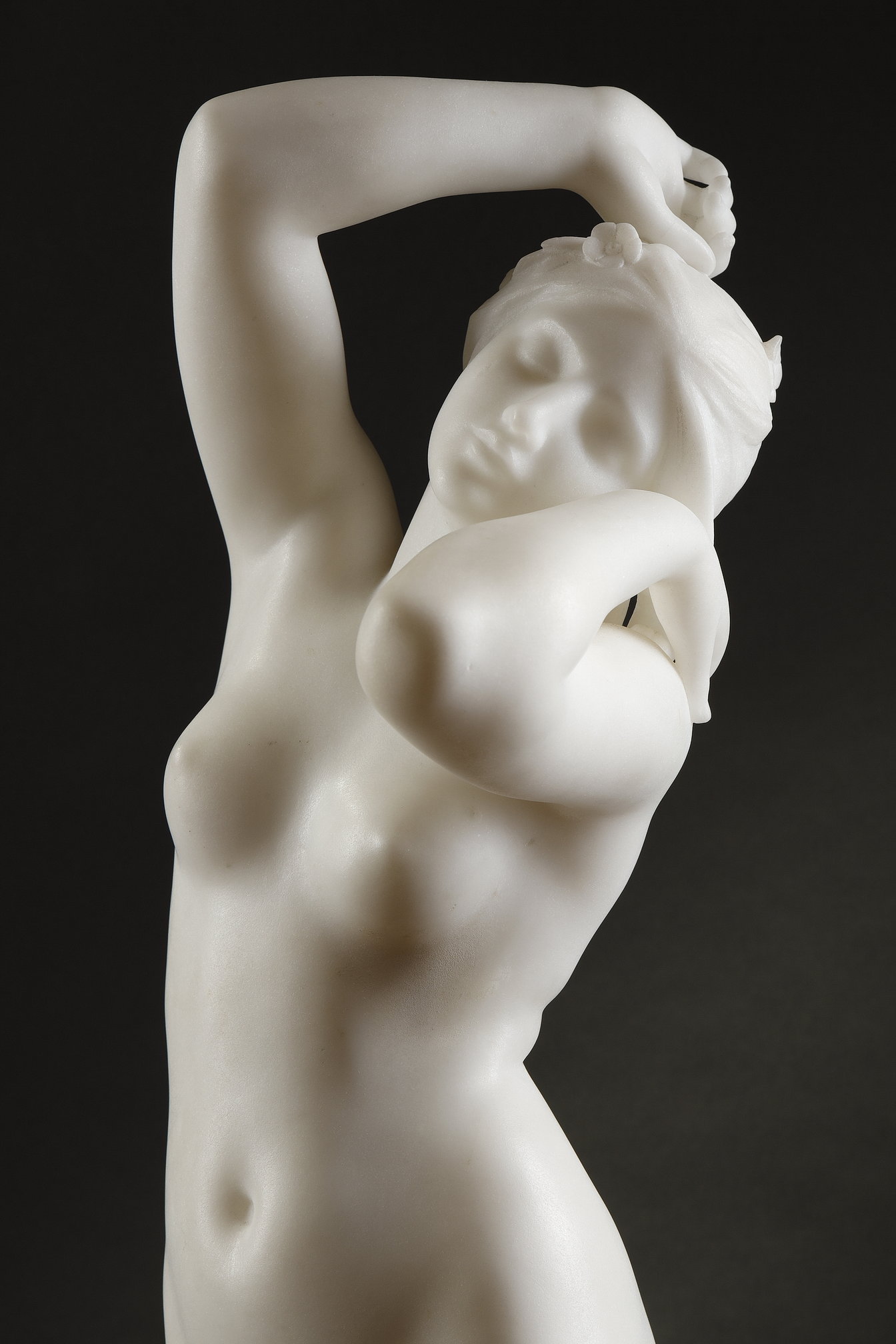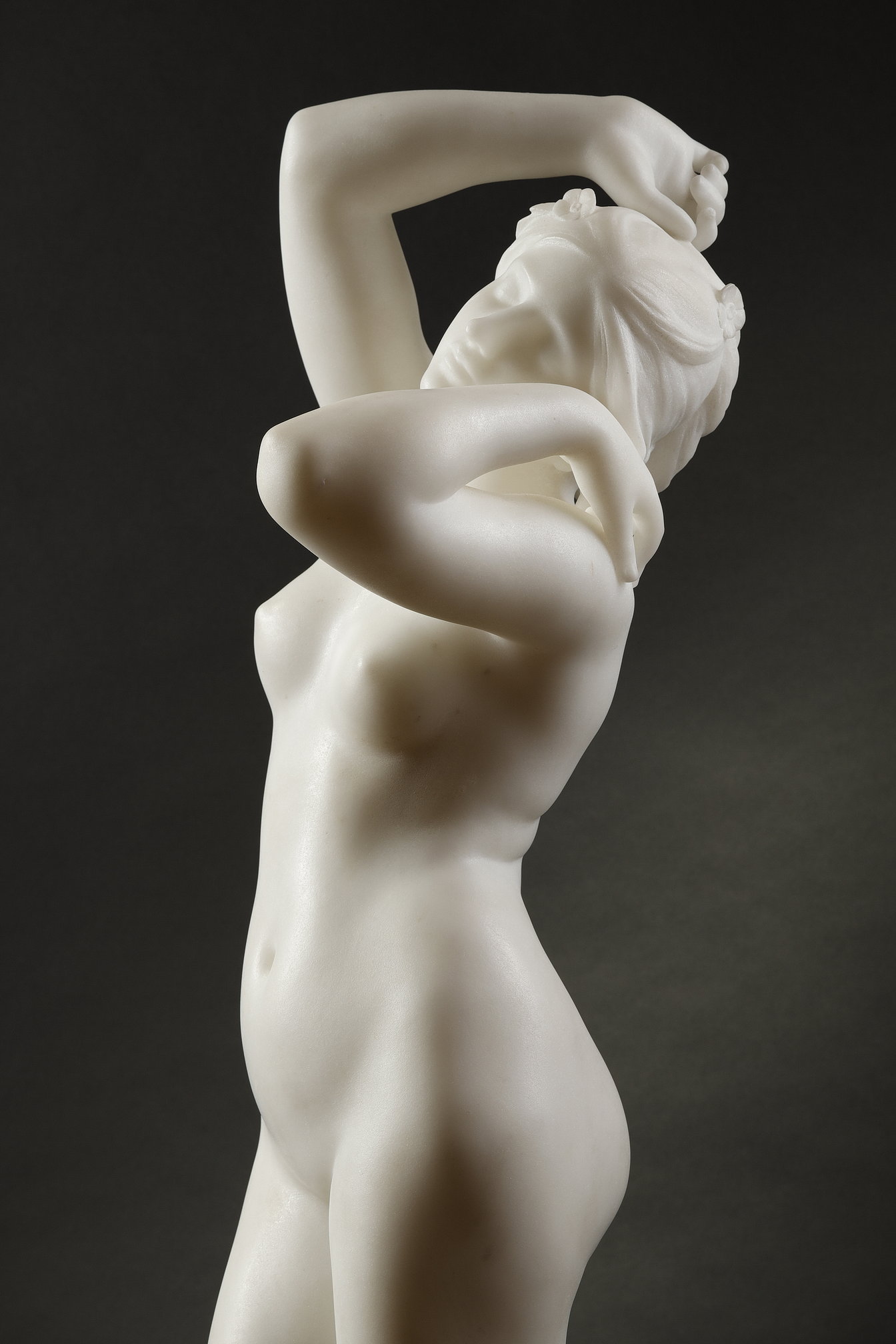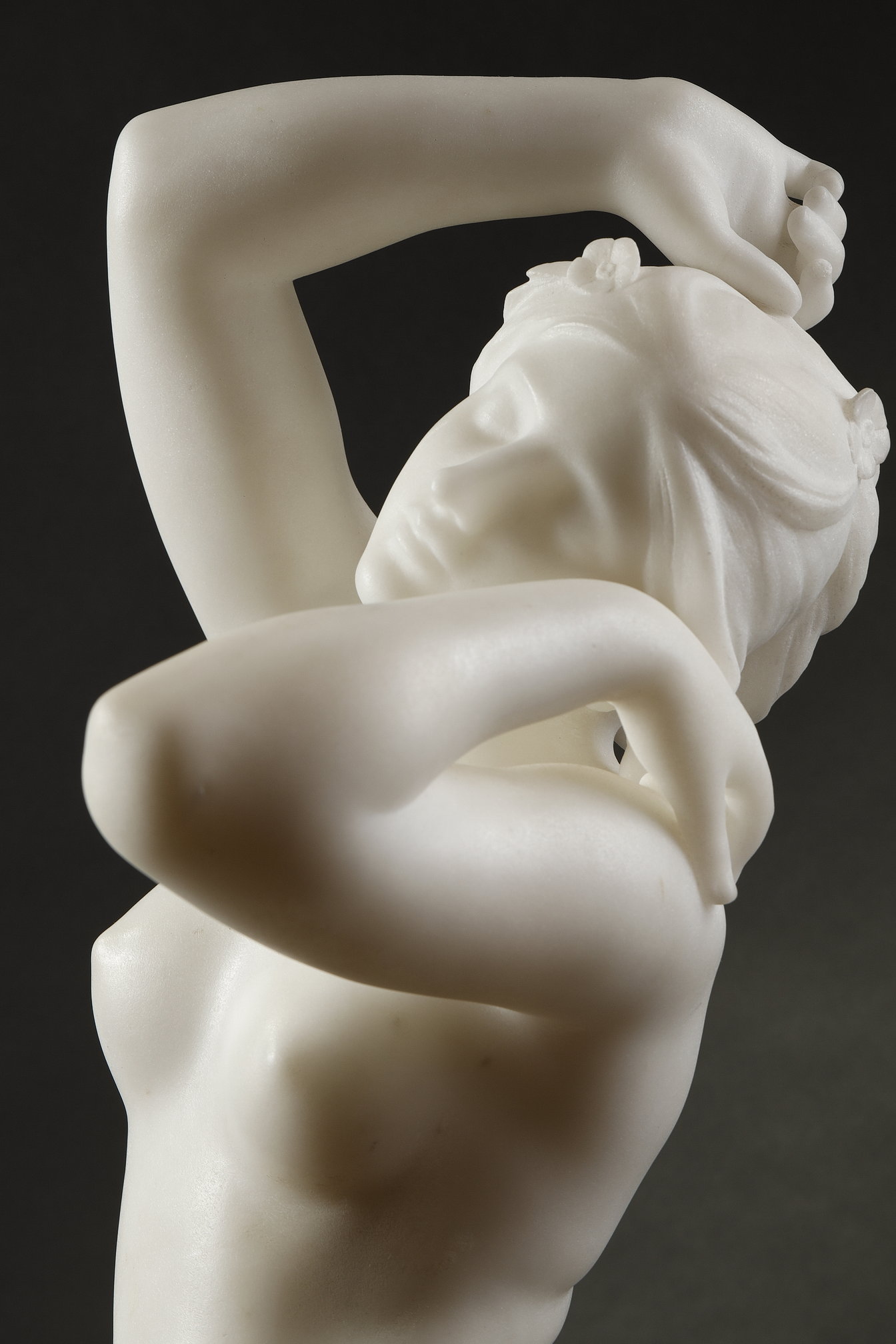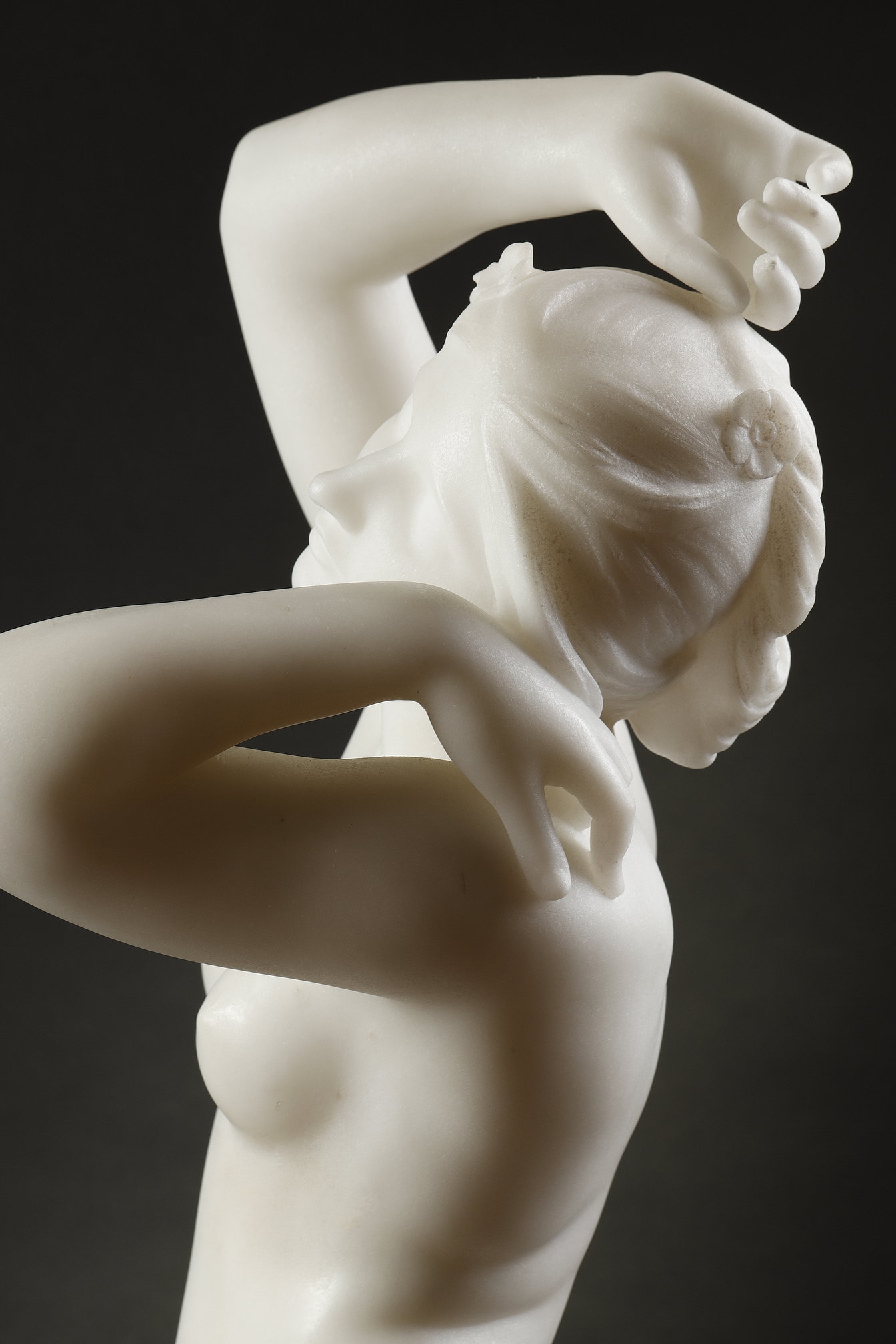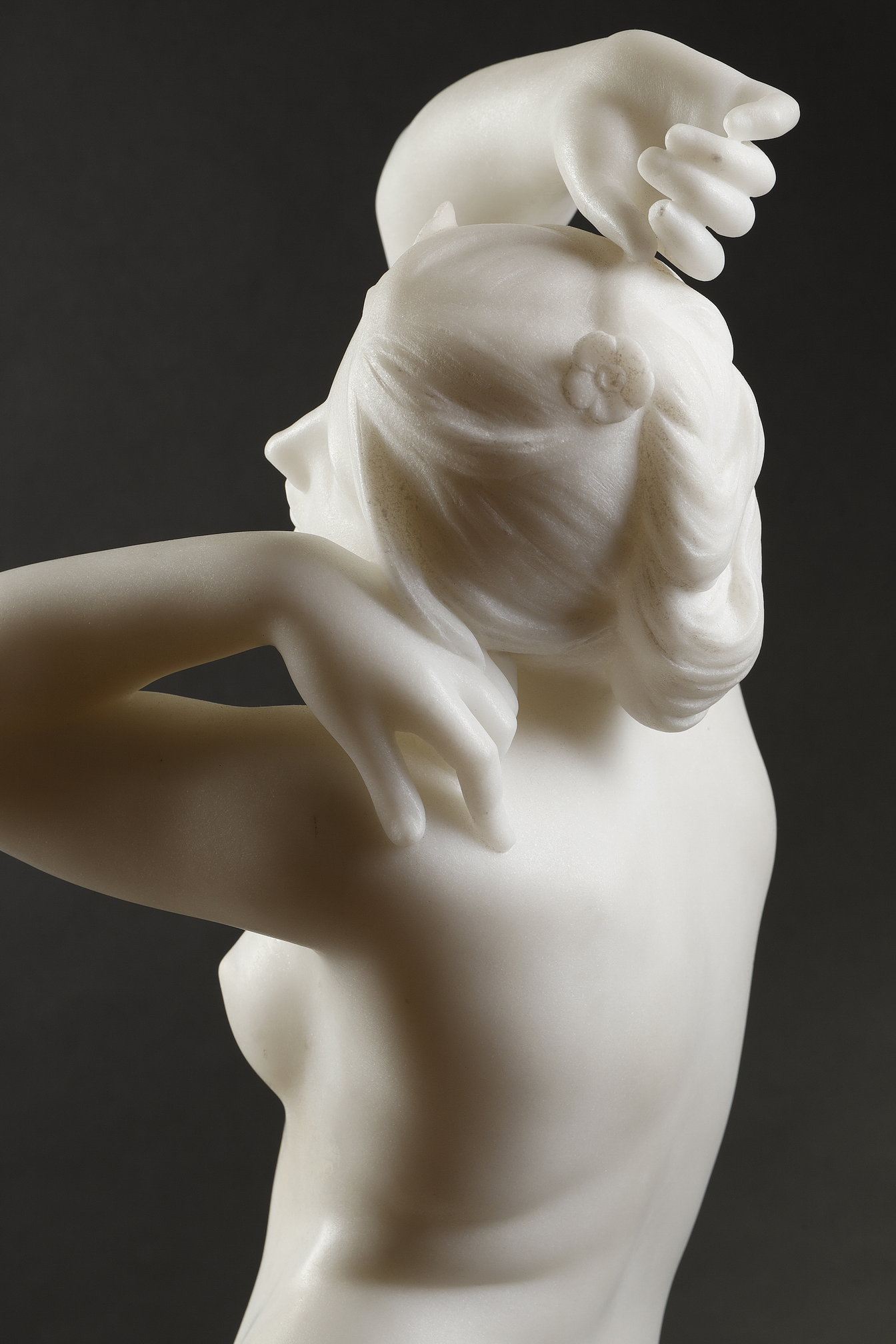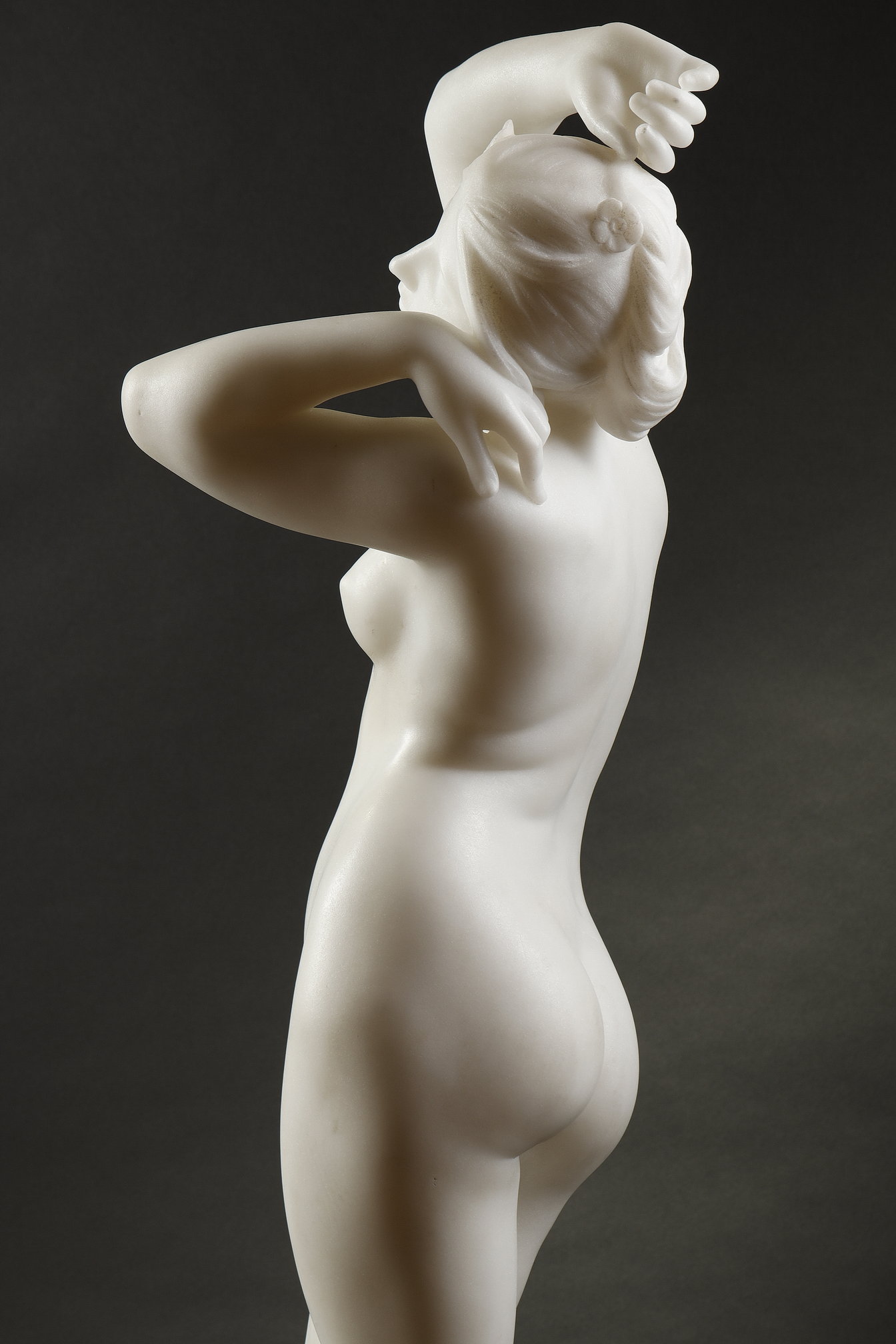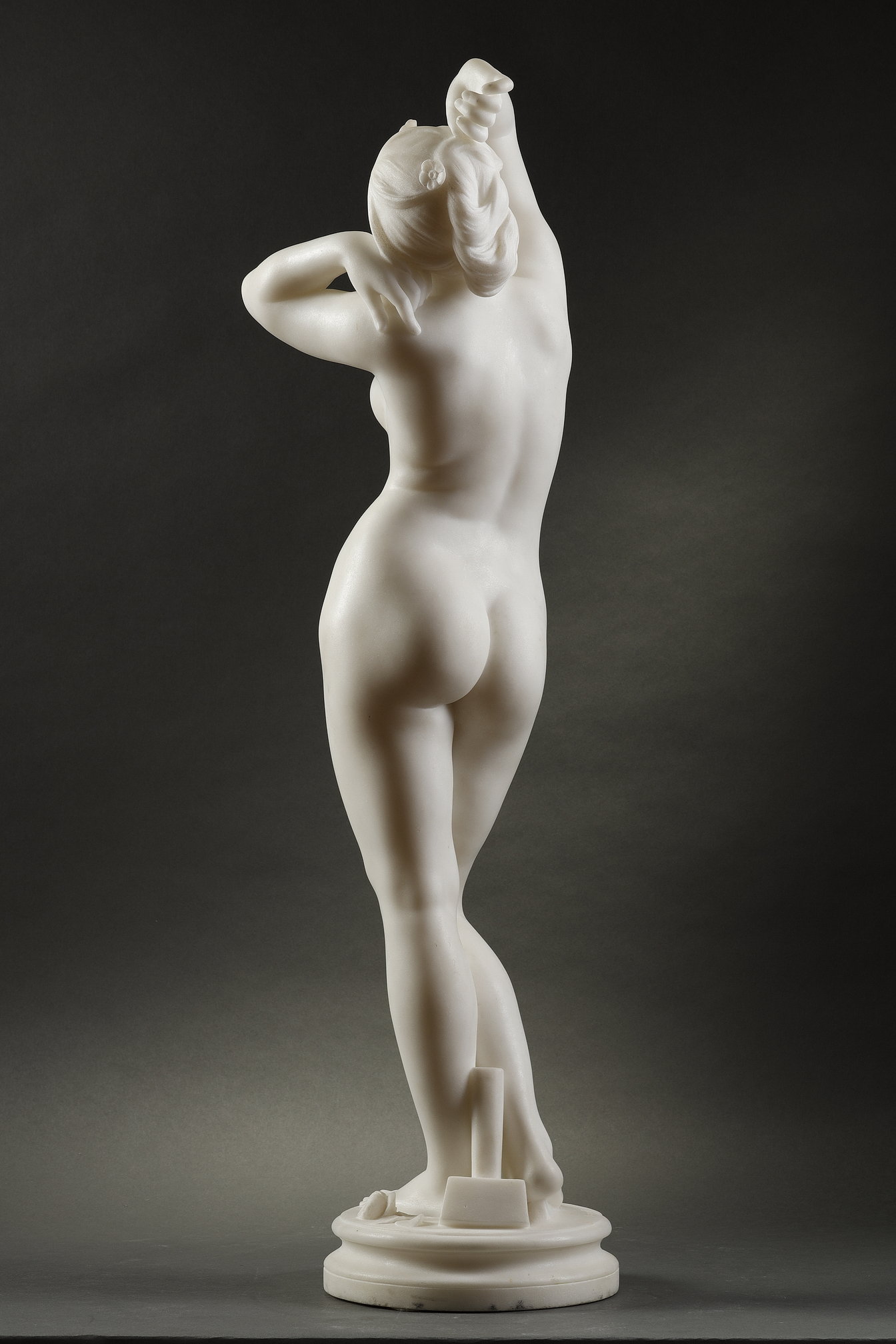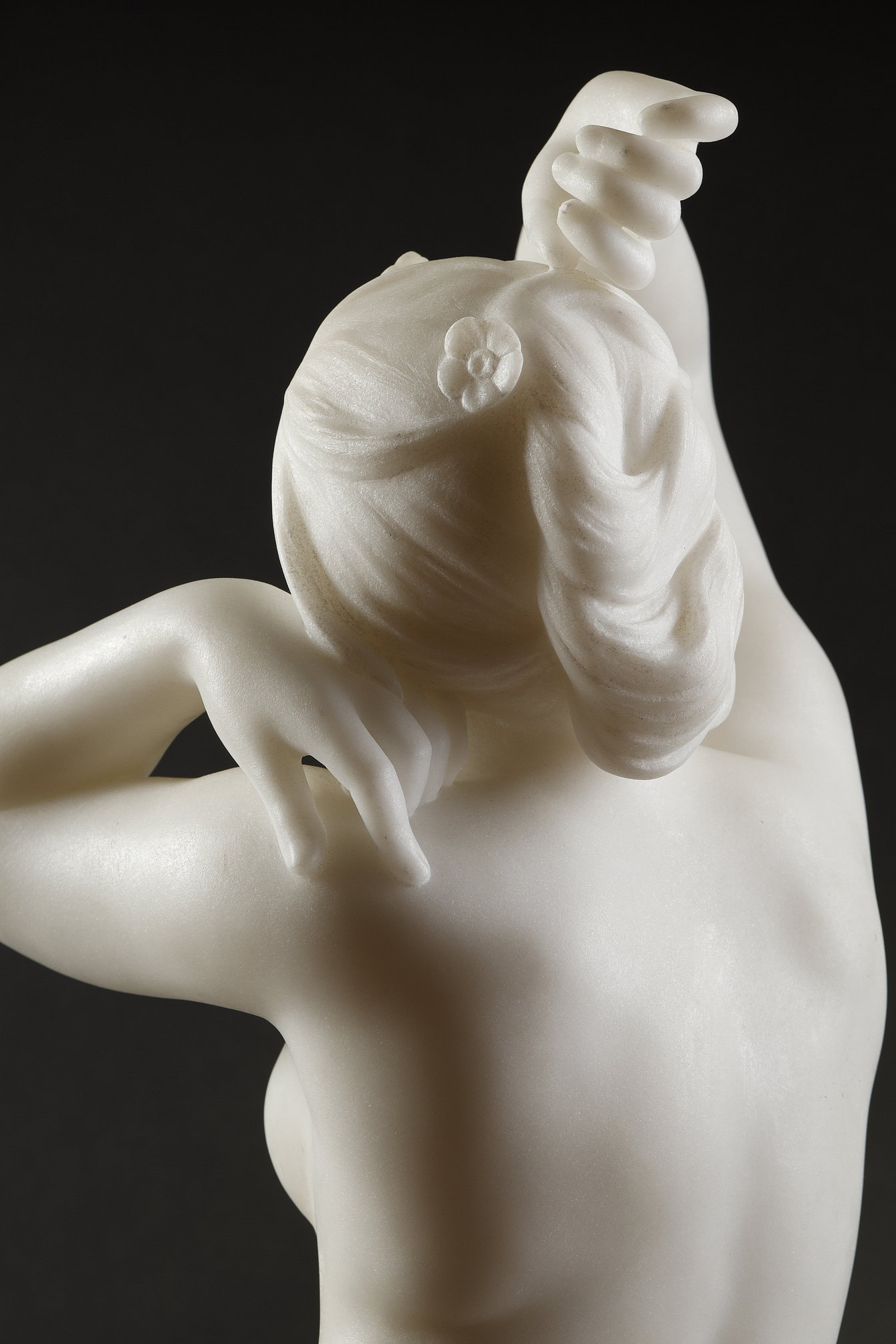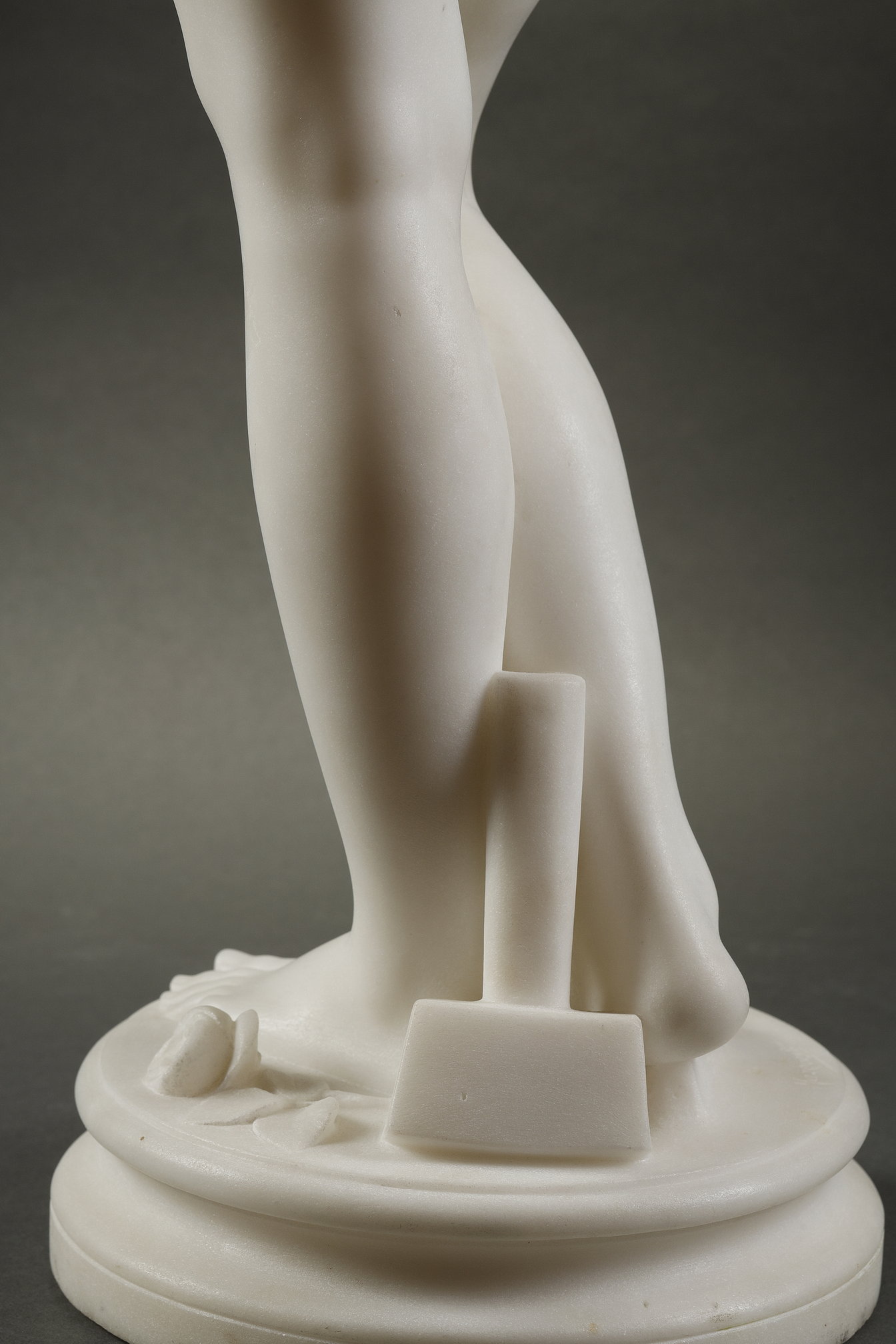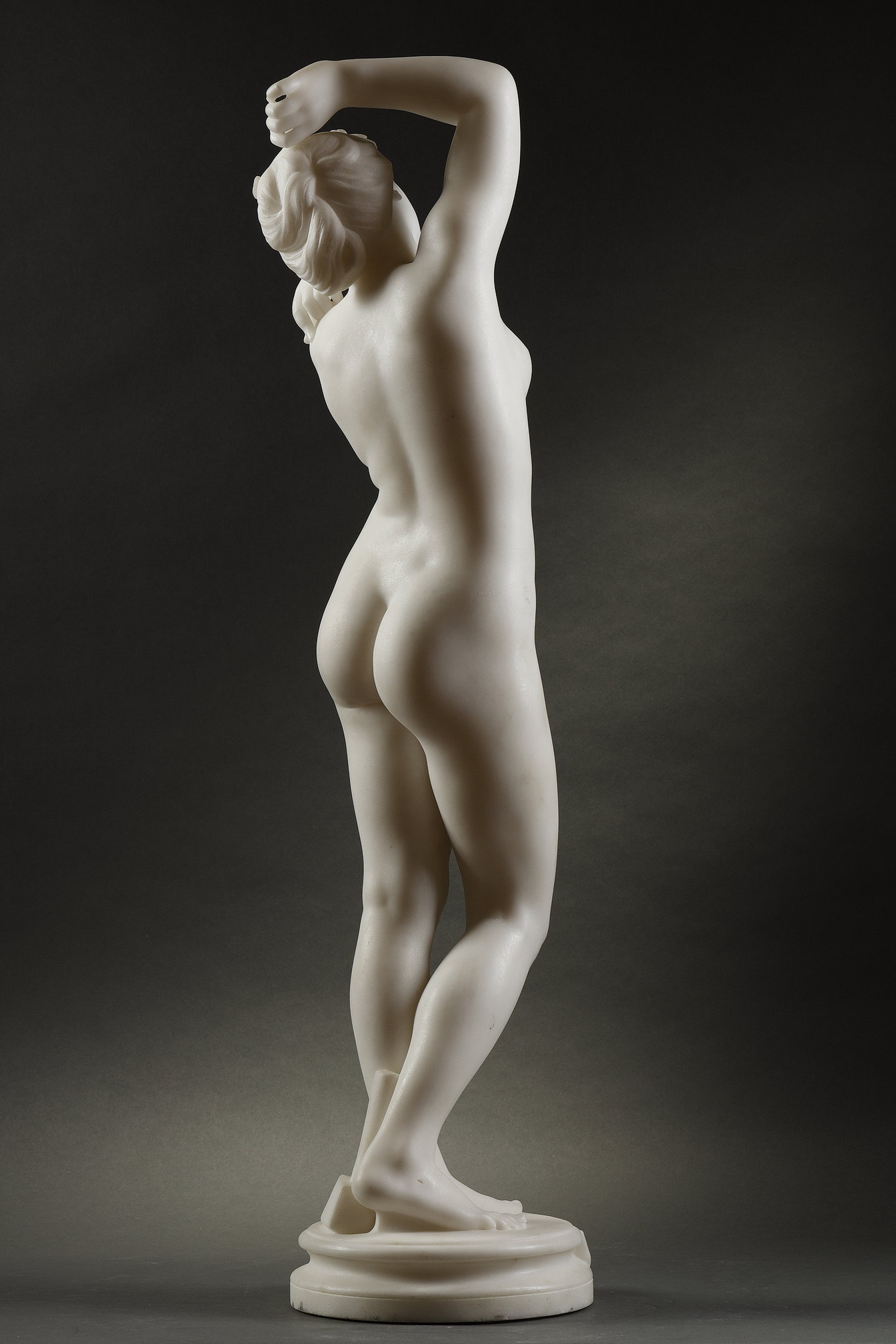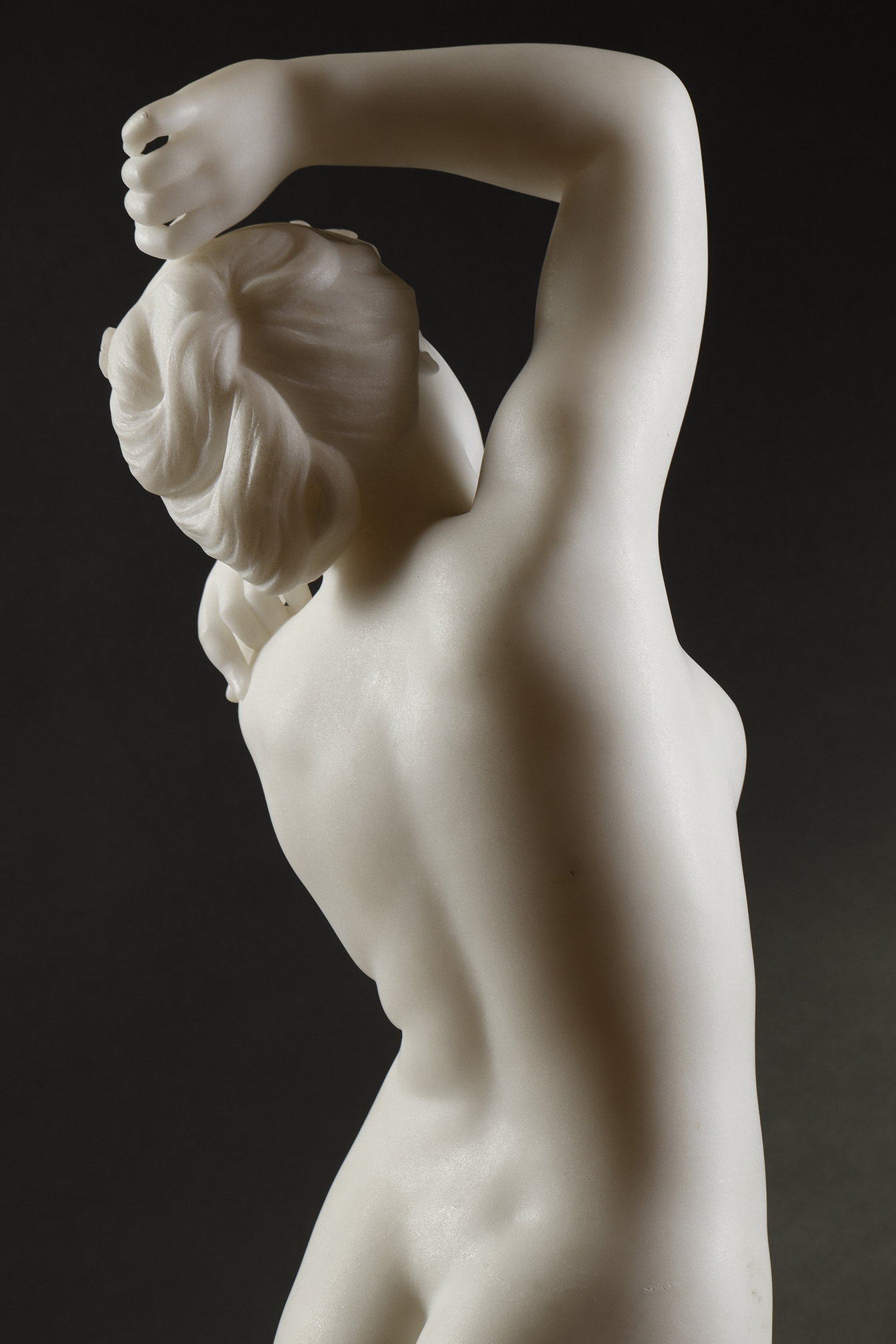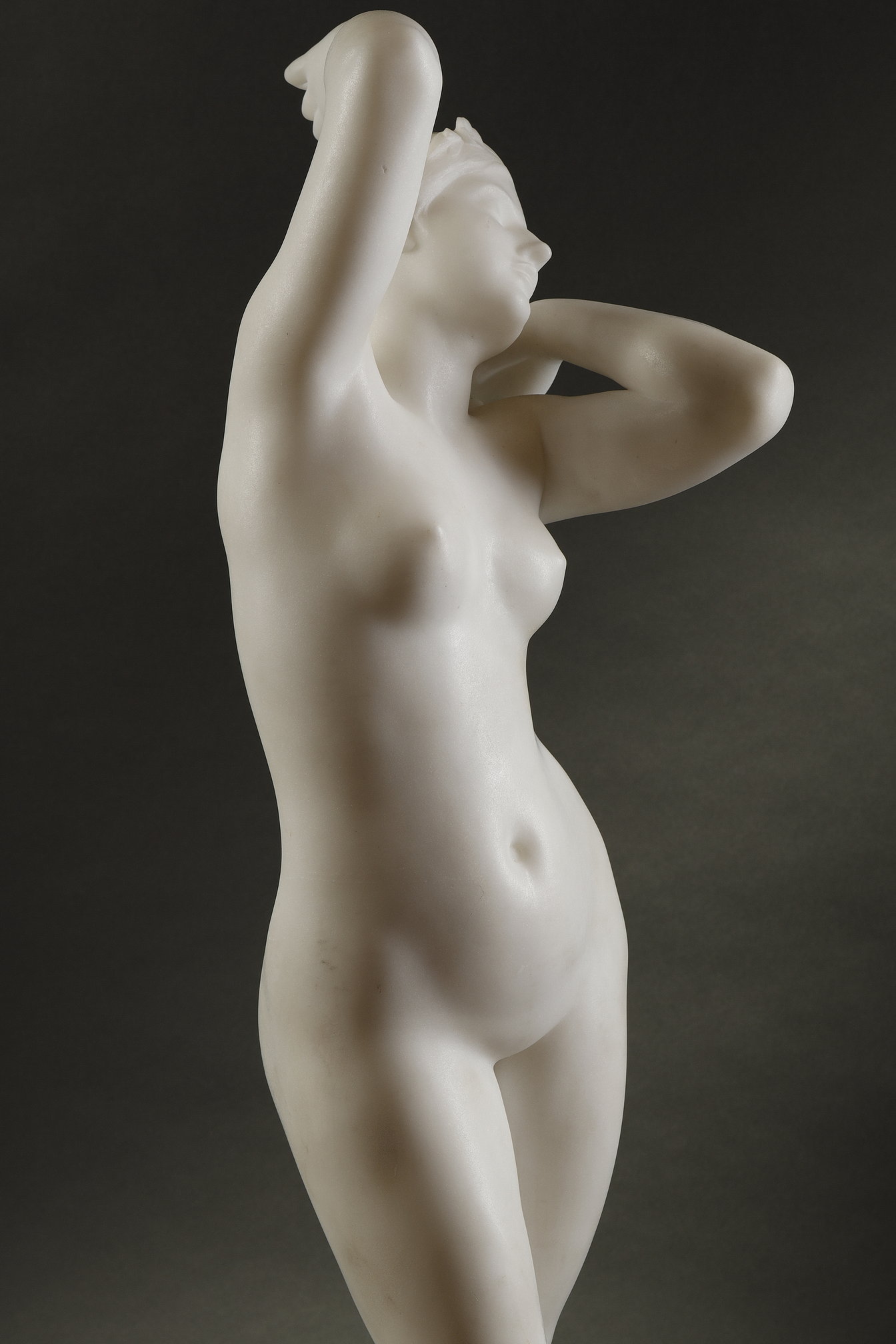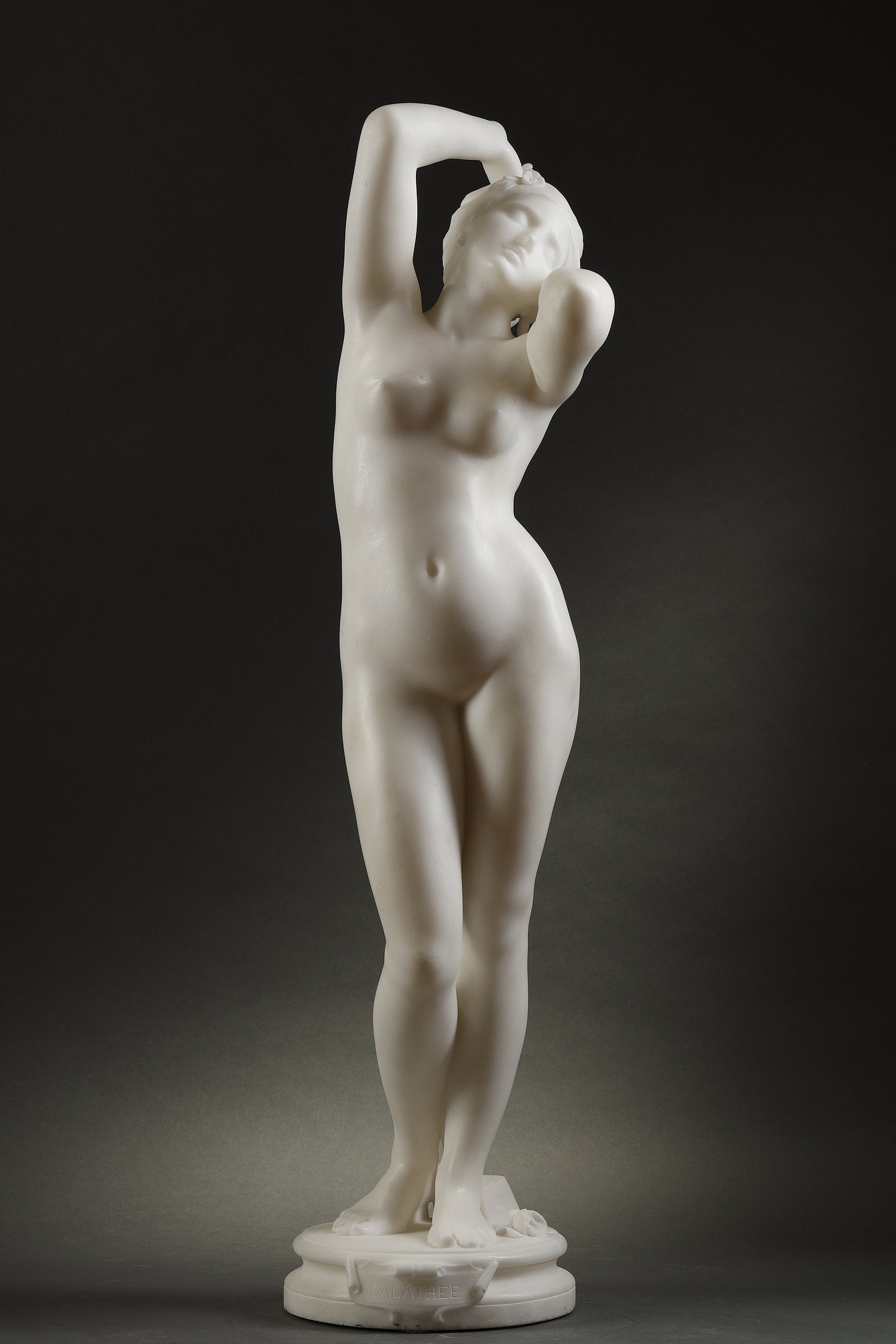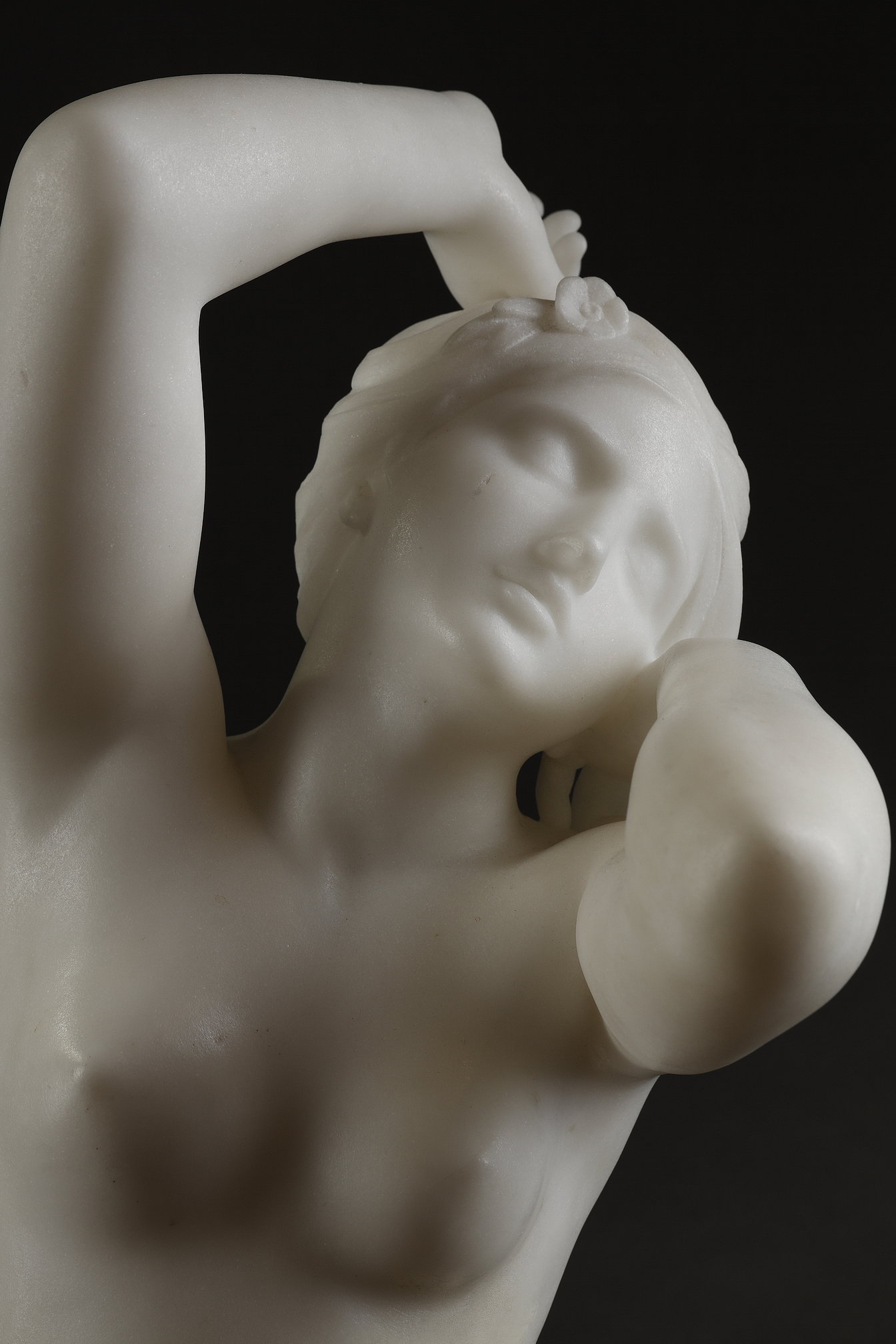GALATEA
LAURENT-HONORÉ MARQUESTE (1848-1920)
French
Date : ca. 1885
Dimensions : 82 cm (Height)
Material : White Carrara marble
Signature : “Marqueste”
Titled : “GALATHEE”
Provenance : Aso O. Tavitian Collection
Historical and artistic context
In a subtle balance between grace and tension, this sculpture by Laurent-Honoré Marqueste depicts Galatea, the heroine of the celebrated myth of Pygmalion as recounted by Ovid in the Metamorphoses (Book X, lines 243–297). Pygmalion, a Cypriot sculptor disillusioned with the women of his time, created a statue of ideal beauty and fell in love with it. Moved by the sincerity of his devotion, Venus granted his prayer: the statue came to life beneath his hands. It is this very moment of metamorphosis that Marqueste chose to immortalize.
Her body delicately twisted, arms raised in a gesture of protection or surprise, the young woman seems to emerge slowly from her primordial block. The marble, worked with remarkable finesse, conveys the softness of nascent flesh, while her dreamy face, half-veiled by her arms, expresses the modesty of a being newly awakened to the sensory world.
At the figure’s feet, the sculptor’s tool and a carefully placed rose subtly recall the hand of Pygmalion and the love that shaped her. This narrative choice — representing only Galatea — heightens the symbolic intensity of the subject and invites contemplation of the blurred boundary between art and life, matter and feeling.
A life-size marble version of Galatea (1.70 m) exists, for which the original plaster model — exhibited hors concours by Marqueste at the 1884 Salon (no. 3731) — is preserved at the Musée des Augustins in Toulouse under the title Le Réveil (Galatée). The marble version, completed around 1885, was acquired by the French State. After several assignments, including to the Louvre, it was officially transferred to the Musée d’Orsay in 1986. Since 2019, it has been displayed (or held in reserve) at the Musée départemental of Dobrée in Nantes.
Literature
- Union Artistique de Toulouse, 10e année : Exposition de 1894, ouverture le 15 mars au Capitole, Toulouse, 1894, n°573
- Salon de 1894, Paris : Ludovic Baschet Editeur, 1894, pp. 83 et 94
- Exposition Universelle de 1900, Catalogue officiel illustré de l’Exposition décennale des Beaux-Arts de 1889 à 1900, Paris, 1900, p.175
- A. Vivet, Congrès de musique sacrée, Insitut de France, 1938 – Documentation photographique montrant La Cigale au Musée de Caen en 1937.

